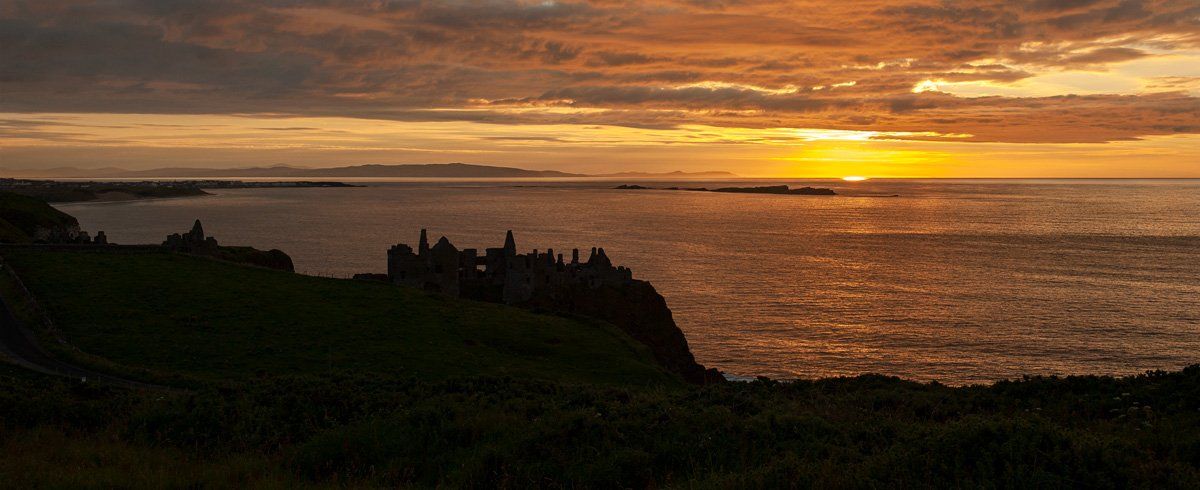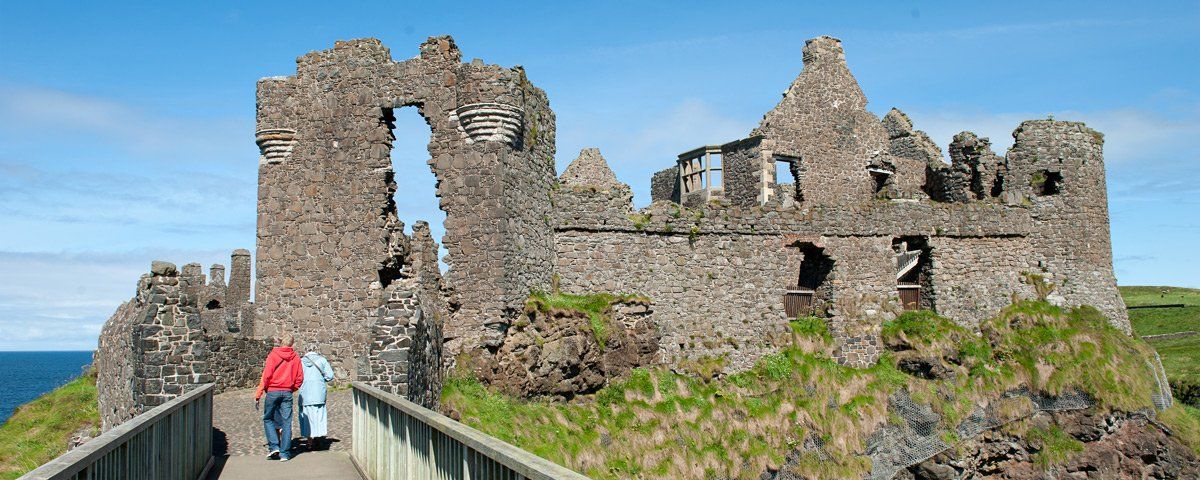St Cuthberts
Chuch of St Cuthbert
I always enjoy a walk around this small ruin on the Ballytober Road, something is intriguing and hauntingly different about it. Known as St. Cuthbert's is built on the site of an older medieval church and was completed in the late 1630s and dedicated to the Northumbrian monk St. Cuthbert. During the period of early Christianity, links were established between the Abbey's of Armoy, Northumbria, Clonmacnoise and Iona with scholastic and spiritual exchanges taking place frequently. The Earl of Antrim Randall McDonnell who resided at Dunluce Castle married Lady Katherine Manners, daughter of the Earl of Rutland and widow to George Villiers, the Marquess of Buckingham who was assassinated by John Fenton a naval lieutenant in Portsmouth.
Katherine Manners is credited with restoring St. Cuthbert's back to a functioning church. Both the Earl and Countess were of the Catholic faith yet provided places of worship for the mainly Protestant settlers in their territories of the Route and Glens - a unique occurrence in 17th Ulster when religious tolerance was a rarity. The church was originally thatched and the interior white ceiling described in memoirs as being painted with the signs of the zodiac, it served the Parish of Dunluce from the late 1620s to 1821 when the new church of St. John the Baptist was built in Bushmills. The graveyard has some fine headstones which convey the background to both the old merchant village of Dunluce and the surrounding Parish from 1630 onwards.
Local folklore tells us that Spanish noblemen and sailors who perished with the Girona at Port na Spaniagh were buried here in 1588, of over 1200 men who were on the ship, some survived and merged into the local community, where their genetic traits still appear in the skin tones of local families. It is well accounted that the McDonnell's had cannons from the Girona mounted on the parapets of the castle and owned other artefacts from the ship. A muniment chest (used for manuscripts and religious purposes) used in St. Cuthbert's is reputed to have come from the Girona. So perhaps the stories of Spanish noblemen and sailors laid to rest in St. Cuthbert's are accurate, it certainly makes a walk around St.Cuthbert's even more fascinating.
Francisco de Cuellar arrived here with sailors after an epic journey up the west coast of Ireland. He visited the site of the Girona tragedy and was given safe passage to Scotland by the MacDonnell's before eventually returning to Spain. Currently the oldest readable stone dates to 1630 and marks the burial site of children belonging to Walter Kid, a merchant in Dunluce and Burgess of Irvine - the stone dates to ten years after the pilgrim Father's landed in New England. The first known vicar of St. Cuthbert's was a William Wallace from 1622-35, he also covered Dunluce and Portcaman, Ardclinis and Derrykeighan where he resided.
In 1634 it is written that he contemplated emigrating to New England but changed his mind by divine intervention. . He was a benefactor of the will of a William Boyd which was executed by Thomas Boyd of Carncoggie - one of the earliest Scottish Settlers in North Antrim. Another story that surrounds St Cuthbert's is that of grave robber's, which at one time was a common event, one of the headstones bears the marks of a gunshot after relatives lay in wait for the thieves to arrive and opened fire upon them.
All Rights Reserved | Art Ward
© 2024





